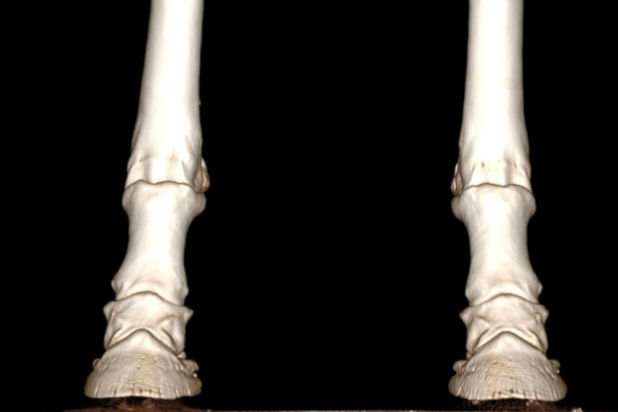
The Importance of the Snaffle Bit in Horse Training
- teresajones1982
- Dec 14, 2024
- 4 min read
The snaffle bit is one of the most widely recognized and utilized tools in horse training, prized for its simplicity and versatility. For both novice riders and experienced trainers, the snaffle bit offers a straightforward means to communicate effectively with the horse. However, understanding when and how to use a snaffle bit, as well as recognizing when to transition beyond it, is essential for fostering a well-rounded and responsive horse.
What is a Snaffle Bit?
A snaffle bit typically consists of a mouthpiece connected to rings on either side, with no leverage or shank. The bit’s design applies direct pressure to the horse’s mouth, enabling the rider to control the horse through basic rein cues. Snaffles come in various designs, including loose-ring, eggbutt, and D-ring, each affecting the bit’s action slightly but all maintaining a straightforward, pressure-based control.
When to Use a Snaffle Bit in Training
The snaffle bit is particularly effective in the early stages of training, such as when starting a young horse under saddle or refining the basics with a new training prospect. Here are some ideal situations for its use:
1. Starting Young Horses: A snaffle bit is often the first bit introduced to young horses, providing a gentle introduction to rein pressure. Since it uses direct pressure, the horse learns that cues come from the rider’s hands, helping them understand fundamental rein aids like turning, stopping, and backing up.
2. Building Confidence and Responsiveness: When training a horse, it is essential to develop trust and comfort with the bit. A snaffle allows trainers to communicate without overwhelming or intimidating the horse, making it a great choice for building confidence and responsiveness.
3. Developing Softness and Flexibility: One of the snaffle bit’s primary purposes is to encourage a horse to be “soft” in the face and jaw, yielding to the bit with minimal pressure. As the horse learns to soften and flex, the snaffle can help teach essential maneuvers such as lateral flexion, collection, and balance.
4. Transitioning Through Training Stages: The snaffle bit allows for clear, precise cues during more advanced groundwork and under-saddle exercises. While a horse’s responsiveness to a snaffle is fundamental, it sets the stage for progression to other bits and advanced training.
Pros of Using a Snaffle Bit
• Direct Control: The direct pressure of a snaffle bit allows for straightforward communication between horse and rider, making it ideal for teaching foundational cues.
• Low Severity: Snaffles are generally considered gentler than leverage bits, as they distribute pressure more evenly and avoid exerting excessive force on sensitive areas of the mouth.
• Encourages Flexion: The snaffle bit promotes flexion and softness, teaching the horse to yield to pressure and become more responsive, which is essential for later stages of training.
• Versatility: Snaffles work well in various disciplines, making them an ideal introductory bit for horses that may transition to different types of work.
Cons of Using a Snaffle Bit
• Limited Communication: While excellent for foundational training, snaffles lack the leverage and precision that some other bits provide, potentially making them less effective for advanced maneuvers.
• Potential for Misuse: Snaffles can be misused, especially by inexperienced riders who may unintentionally exert excessive pressure, leading to discomfort or resistance from the horse.
• Not Suitable for All Situations: In some cases, snaffle bits may not offer enough control, especially in situations where higher-level cues or increased stopping power are needed. In these instances, a transition to a bit with leverage might be beneficial.
Why It’s Important to Graduate from the Snaffle Bit
Graduating from the snaffle bit is a crucial step in a horse’s training journey. Once a horse has demonstrated understanding and responsiveness to basic rein cues, they’re ready to take on the greater refinement that comes with more advanced bits. Here are a few reasons why transitioning beyond a snaffle bit can benefit both horse and rider:
1. Enhanced Control and Precision: As horses progress through training, more subtle cues become necessary. Transitioning to a leverage bit allows riders to communicate more precisely, as these bits provide additional control without requiring excessive force.
2. Development of Advanced Skills: Maneuvers such as neck reining, lead changes, and collected movements often require a higher degree of finesse than a snaffle can provide. A curb bit or similar type allows trainers to build on the foundational softness learned with the snaffle, enhancing the horse’s responsiveness and maneuverability.
3. Transitioning to Competitive or Specialized Disciplines: In many disciplines, particularly Western performance events like reining or cutting, a leverage bit is standard. Training with an advanced bit can help prepare the horse for the type of control and responsiveness expected in these settings.
4. Preventing Stagnation: Just as a snaffle bit aids in foundational learning, graduating to a different bit fosters further growth and learning. It challenges the horse to respond to new types of pressure and aids, keeping their training experience engaging and dynamic.
Conclusion
The snaffle bit is a valuable tool in the early and intermediate stages of training, offering a straightforward, gentle means of communication that helps develop a horse’s responsiveness and confidence. While it remains an essential component of training, understanding when to move beyond the snaffle is just as important. As a horse advances, transitioning to other bits helps refine skills, improve control, and ensure the horse continues to develop positively. For trainers, knowing when and how to make this transition is crucial to achieving a well-rounded, versatile, and responsive equine partner.



Comments